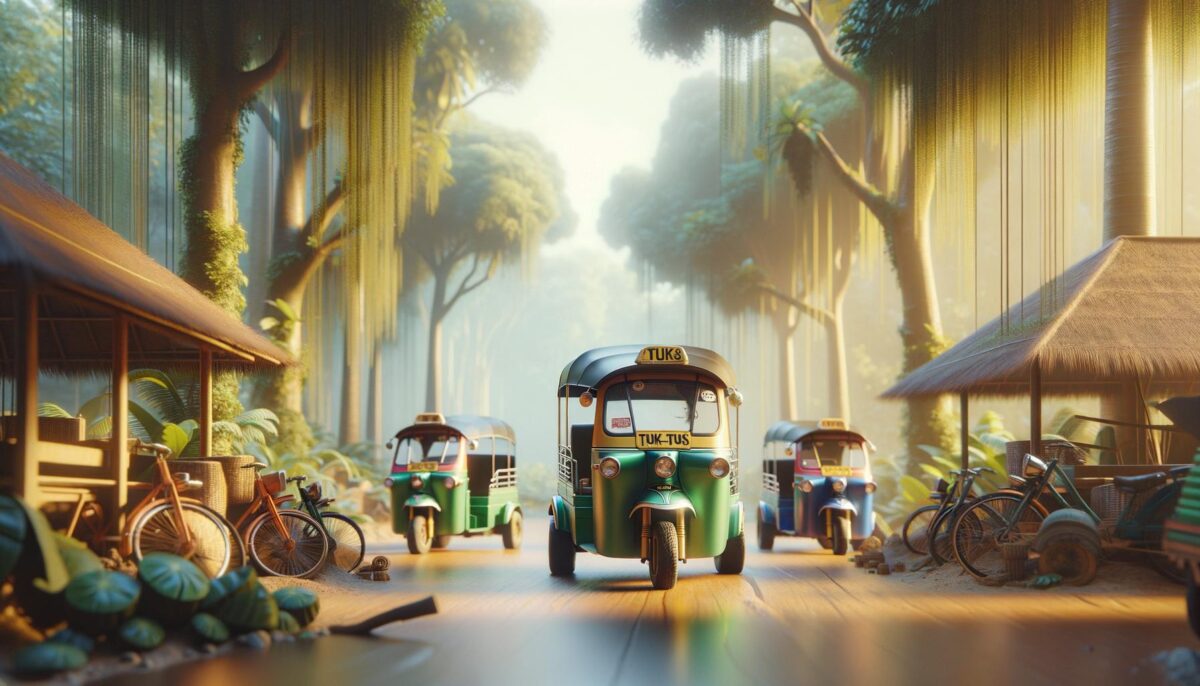A Brief History of Tuk-Tuks
Tuk-tuks, known by various names like auto-rickshaws or tricycles, have become an iconic part of urban landscapes across many countries. Originating in the mid-20th century, these compact, motorized vehicles were created to be a more affordable and maneuverable alternative to traditional taxis. The combination of affordability, efficiency, and convenience in crowded city streets quickly made tuk-tuks popular, particularly in Asian and African cities. Over the decades, the design and functionality of tuk-tuks have evolved, embracing new technologies while preserving their distinctive charm. Today, they are celebrated for their cultural significance and role in public transportation, often symbolizing the vibrant energy of bustling city life.
The Practical Aspects of Tuk-Tuks
Tuk Tuks offer a convenient way to go out, especially in areas with heavy traffic. Their compact size allows them to weave through congested streets, reaching destinations more efficiently than larger vehicles. Tuk Tuks provide several practical benefits, including:
- Affordability: Lower fares make them accessible to a wide range of passengers.
- Manoeuvrability: Easy navigation in tight spaces and traffic jams.
- Availability: Frequently found in city centers and tourist spots, ensuring easy access.
Given these benefits, it’s no wonder that tuk-tuks have become a preferred mode of transport for many urban commuters. However, while they are practical, it’s essential for passengers to negotiate fares beforehand in regions where meters are not used to avoid misunderstandings.
The Cultural Significance of Tuk-Tuks
Beyond their practical applications, tuk-tuks hold a particular cultural significance in the regions they operate. Often decorated with vibrant colors, unique artwork, and symbols reflecting local traditions, tuk-tuks add a splash of personality to the streets. They frequently feature in local festivals and parades, sometimes embellished with additional accessories and decorations. In countries like Thailand, tuk-tuks are not just a mode of convenience; they have become a symbol of the nation’s hospitality and cultural identity. Tourists often seek out rides in tuk-tuks as part of their travel experience, making them an iconic representation of local culture.
Environmental Impact and Innovations
With growing concerns about environmental sustainability, the impact of tuk-tuks has come under scrutiny. Traditional tuk-tuks powered by two-stroke engines are known for higher emissions. As a response, many manufacturers and operators have started to innovate with electric and hybrid models, significantly reducing their environmental footprint. These advancements not only address pollution concerns but also promise cost efficiency in the long run due to lower fuel expenses and maintenance costs. Additionally, electric tuk-tuks are quieter, enhancing the urban soundscape. These innovations make tuk-tuks a more sustainable and eco-friendly option, aligning with global efforts towards greener cities.
Future Prospects of Tuk-Tuks
As cities across the globe look to innovate and modernize their transportation networks, tuk-tuks are likely to play an essential role in the future of urban mobility. The adaptability of these vehicles means they can continue to evolve alongside technological advancements. With improvements in battery technology and smart city integration, tuk-tuks could become even more efficient and connected. The concept of smart tuk-tuks equipped with GPS technology and ride-sharing apps is gaining popularity, potentially revolutionizing how urbanites commute. As they continue to adapt to the modern era, tuk-tuks are well-positioned to remain relevant and essential components of urban transport systems worldwide.
Conclusion: Embracing the Journey
Tuk Tuks, as a convenient way to go out, offer more than just a method of transportation. They encapsulate the essence of local culture, embody practical urban mobility solutions, and continue moving towards a sustainable future. Whether for daily commutes in bustling cities or an unforgettable tourist experience, tuk-tuks promise an authentic taste of the locale. As we embrace technological innovations and shifts towards greener alternatives, tuk-tuks may very well become a beacon of change, demonstrating how tradition and modernity can coexist harmoniously. The journey in a tuk-tuk is not just about reaching a destination but enjoying a ride that reflects the heartbeat of the city.
